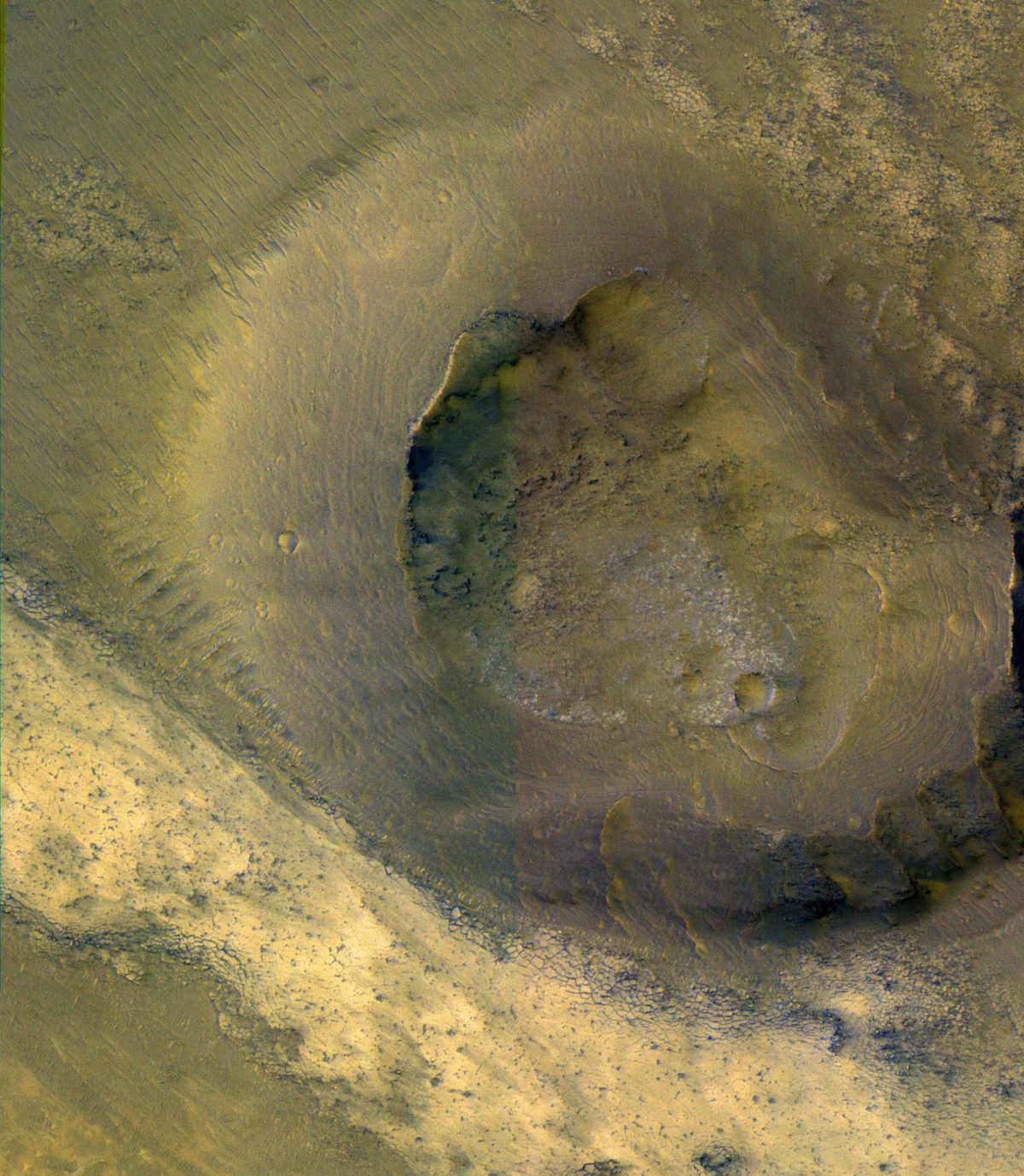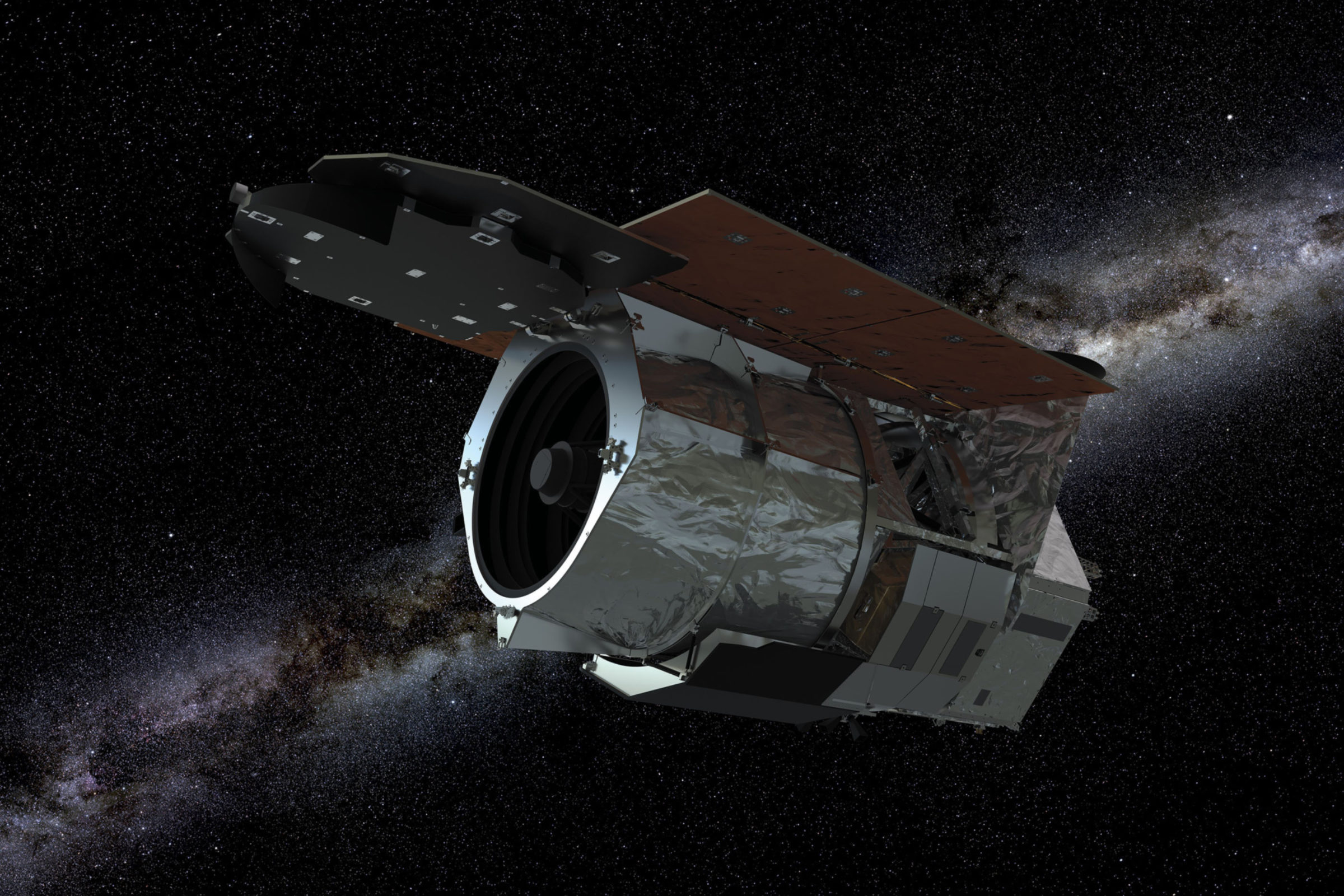The Downlink • May 22, 2020
Martian mud and a milestone in human spaceflight
Space Snapshot

Researchers at the German Aerospace Center say laboratory experiments show that Mars may have “mud volcanoes”—locations where watery sediments seep onto the surface. Because of Mars’ low temperatures and pressures, the mud quickly freezes. Mars once had flowing water on its surface, and some of it still exists underground today. Learn more about why and how we explore Mars at planetary.org/mars. Image credit: NASA/JPL-Caltech/University of Arizona.
You love space, now take action
This weekly newsletter is your toolkit to learn more about space, share information with your friends and family, and take direct action to support exploration. Anyone can subscribe at planetary.org/connect to receive it as a weekly email.
Mission Briefings


NASA has renamed its upcoming WFIRST mission the Nancy Grace Roman Space Telescope (pictured)—Roman Space Telescope for short—in honor of the agency’s first chief astronomer. Roman, who died in 2018, set up a committee of astronomers and engineers in the 1960s to envision how in-space telescopes could revolutionize scientific research. Those efforts eventually led to the Hubble Space Telescope. The Trump administration has tried and failed to cancel the Roman Space Telescope in its last 3 budget requests. Learn how to help make the mission happen at planetary.org/roman-space-telescope. Image credit: NASA

NASA astronauts Bob Behnken and Doug Hurley arrived at Kennedy Space Center in preparation for their upcoming historic launch on SpaceX’s Crew Dragon to the International Space Station. Crew Dragon, meanwhile, arrived at the launchpad for installation on a Falcon 9 rocket. Don’t miss our full coverage of the Crew Dragon launch here. You can learn more about NASA’s commercial crew program at planetary.org/commercial-crew

Engineers successfully folded NASA’s James Webb Space Telescope (JWST) into its launch configuration for the first time. JWST’s mirror—which consists of 18 hexagonal segments—is too wide to fit inside a rocket’s nose cone, so it folds up for launch and must undergo a complex deployment sequence in space. Next up for JWST: environmental tests that will simulate the vibrations and sound levels it will face during launch next year.

NASA’s OSIRIS-REx spacecraft will make its first attempt to collect a sample from asteroid Bennu on 20 October 2020. The sample collection process involves OSIRIS-REx giving Bennu a brief “high-five,” firing a puff of gas into the surface that kicks asteroid material into a cylindrical collection chamber. The samples, which will be returned to Earth in 2023, will help scientists understand how asteroids contributed to the origin of planets, and what role they may have played in the origin of life on Earth. Learn more about the OSIRIS-REx mission here.

Japan launched a cargo ship to the International Space Station that is scheduled to arrive on Monday. The HTV spacecraft is loaded with more than 4 tons of supplies, water, and other hardware, as well as 6 new lithium-ion batteries that will be installed on future spacewalks as part of ongoing upgrades to the station’s power systems. Learn about the ISS at planetary.org/iss.
From The Planetary Society

We're just days away from the first commercial flight of NASA astronauts to the International Space Station! Our guide to the launch prepares you to celebrate this exciting moment and share it with others. You can also learn more about the commercial crew program and why it matters, and brush up on your knowledge about the International Space Station. Watch the launch with us on 27 May at 1:32 p.m. PDT / 4:32 p.m. EDT / 20:32 UTC.
What's Up

Today’s new moon means you’ll have a better view of the night sky (weather permitting). Check out Mercury and Venus in the evening onward, and Mars, Jupiter, and Saturn before dawn. With binoculars or a telescope, you can also find Neptune in the early morning sky.
Retro Gear

Whether you’ve been with The Planetary Society since our very beginnings or just appreciate a good old throwback, you’ll love our newest t-shirt featuring The Planetary Society’s original logo from 40 years ago. Every purchase supports The Planetary Society’s mission to advance space science and exploration.
Wow of the Week

This week’s Wow comes from Planetary Society member Kirk Duckwall and his daughter Julianna, age 6. While making model rockets they noticed the blast was making interesting designs on the launch pad. They came up with the creative idea of putting fresh paint on the pad to see what happened. They named the resulting image “Eye on the Sky.” Kirk emphasized that Julianna did all the hard work: “she helped pack the chute and put in the engine and most importantly launched and retrieved the rocket.”
Do you have a suggestion for the Wow of the Week? We’re looking for space-related art, music, gadgets, quotes, fashion, burning questions, brief sci-fi passages, or anything else that will make our readers go “Wow!” Send us your idea by replying to this email, and please let us know if you’re a Planetary Society member.


 Explore Worlds
Explore Worlds Find Life
Find Life Defend Earth
Defend Earth


